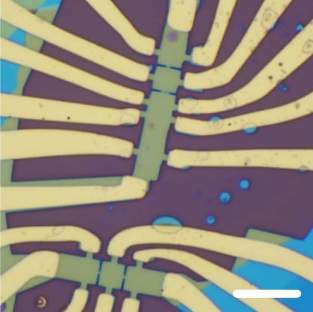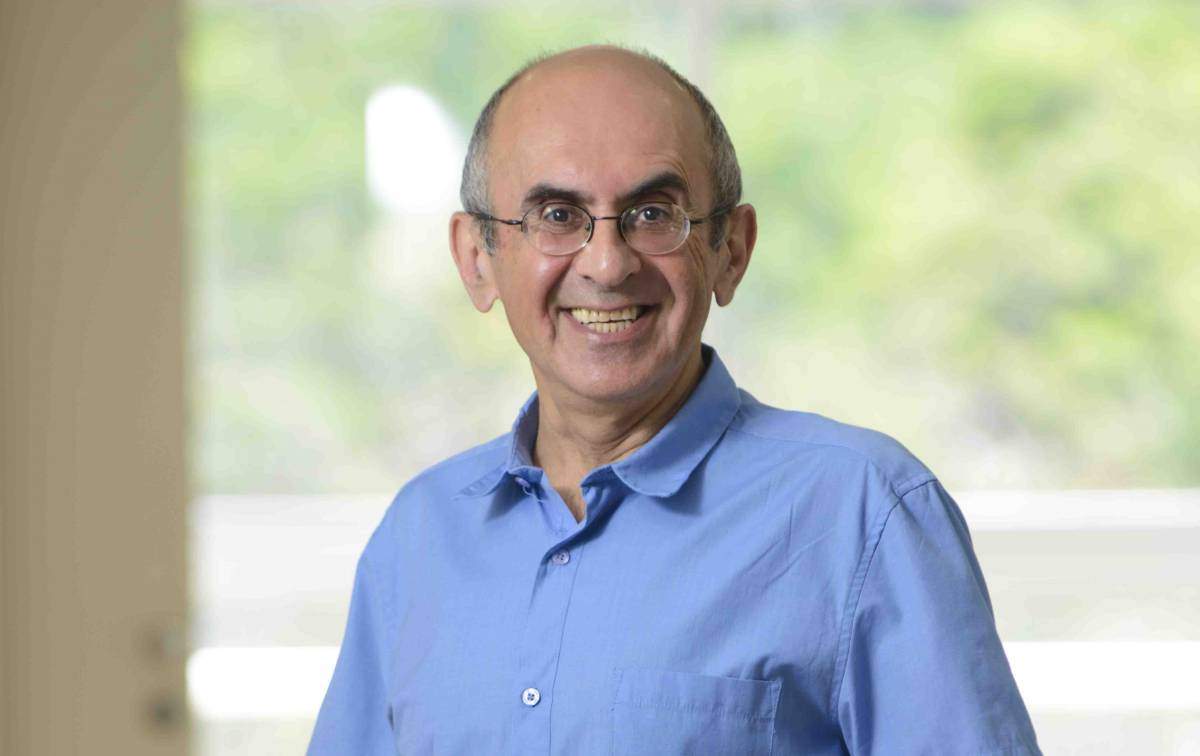Electrons in a “viscous flow” surpass conductivity limits and could lead to new types of electronic devices

Bus drivers will tell you that crowds trying to push through the door all at once delay the schedule much more than orderly, one-at-a-time boarding. Electrons are thought to flow through conducting materials like polite bus passengers – best when waiting their turn. But new research suggests that when the opening is narrow, the crowded, pushy approach may be preferable, reducing the resistance to their passage and increasing conductivity. This idea was first proposed in the theoretical research of Prof. Gregory Falkovich of the Weizmann Institute of Science and Prof. Leonid Levitov of the Massachusetts Institute of Technology, in findings that were published in the Proceedings of the National Academy of Sciences (PNAS). Subsequent experimental research, reported in Nature Physics, showed that the principle could extend to overcoming a “ballistic limit” that had been formulated in the 1950s and accepted ever since.
This limit, set by the American Jewish physicist Rolf Landauer, was thought to be the upper boundary for electrical conductance, and it set the flow of electrons apart from that of molecules in gases or fluids that flow in pipes. These flow better when there is some density, and the reason for this is rooted in basic physics: When molecules are thinly spread in the pipe, they mainly collide with the walls of the pipe, transferring energy to the pipe and causing them to slow down. In contrast, when the make-up of the flow is dense – or viscous – the molecules are more likely to interact among themselves, so that the momentum is conserved between the flowing molecules. So increasing the density increases the speed of flow in the pipe.

In physics textbooks, the electrons in electric currents have been depicted as molecules of a thin gas – that is, the transfer of energy to the “pipeline” or atoms of the material in which they flow, a function known as electrical resistance – was thought to be of major importance, while the collisions between electrons were thought to be nearly irrelevant. Electrical resistance had already been formulated in Ohm’s law in 1826. But in ultraclean materials such as graphene, collisions between electrons can be quite significant, and in some circumstances,the laws for the flow of gasses or liquids may apply. In the present study, Falkovich and Levitov showed that when electrons are “crowded” in a narrow piece of metal, most of the collisions are between electrons. In other words, like the gas or water in a pipeline, as density rises, resistance drops and conductance rises. And temperature plays a role as well, since higher temperatures mean more collisions and thus better conductivity. This goes against the classic model for metals, which says that conductivity goes down as the temperature rises. Falkovich: “The findings surprised quantum physicists, but they are familiar to every liquid or gas engineer, or even to every plumber. So this is, in a sense, applying the logic of plumbing to electricity.”
Superballistic
The laws of hydrodynamics were formulated in the 19th century by forcing fluids through narrow pipes, and Falkovich and Levitov proposed doing something similar with electron flow – passing it through thin openings in a layer of graphene. The experiment based on their hypothesis was led by Prof. Andrei Geim of the University of Manchester, who received a Nobel Prize in Chemistry for his discovery of the material, which is composed of a single layer of carbon atoms. Also participating in the research were Dr. Moshe Ben Shalom, now at Tel Aviv University, and scientists from the UK, Italy, the Netherlands, Japan and Russia, together with Falkovich and Levitov, who not only supplied the theory but took part in analyzing the data. As they had hypothesized, the conductance of the electrons in the experimental setup increased as the temperature rose and even surpassed the limit set by Landauer. They called this “superballistic flow.”
“The flow that you see in a gas pipeline operates in graphene according to the same physics,” says Falkovich. “And the path to this discovery started here at the Institute, when Geim was here on a visit. Levitov said to him: ‘Falkovich has something weird to say to you,’ and I put it to him that heating graphene should increase its conductivity. Geim retorted that this couldn’t be, since graphene behaves like a metal and the conductivity of metal is known to decrease when it is heated.”
These findings could be significant for the electronics industry. As opposed to superconductors, which require extreme cold to work, super-ballistic devices would work at room temperature – and even better when they heat up. And they might make use of another principle of viscous fluids, in which the various particles in the flow exert long-range effects on one another. Thus, new ways of remotely controlling the current might be developed. “I’m a theoretician, so I don’t concern myself with the practical side of things, but even I can see the future implications for electronics that will be smaller and faster, with better control,” says Falkovich.
Prof. Gregory Falkovich is the incumbent of the Israel Pollak Professorial Chair in Physics.

Recent Comments